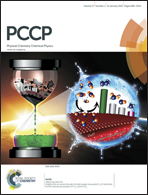Analysis of solvent induced porous PMMA–Bioglass monoliths by the phase separation method – mechanical and in vitro biocompatible studies†
Abstract
Mimicking three dimensional microstructural scaffolds with their requisite mechanical properties in relation to human bone is highly needed for implant applications. Various biocompatible polymers and bioactive glasses were synthesized to achieve these properties. In the present study, we have fabricated highly porous and bioactive PMMA–Bioglass scaffolds by the phase separation method. Chloroform, acetone and an ethanol–water mixture were used as the different solvent phases in preparing the scaffolds. Large interconnecting pores of sizes ∼100 to 250 μm were observed in the scaffolds and a porosity percentage up to 54% was also achieved by this method. All samples showed a brittle fracture with the highest modulus of 91 MPa for the ethanol–water prepared scaffolds. The bioactivities of the scaffolds were further studied by immersing them in simulated body fluid for 28 days. Scanning electron microscopy, X-ray diffraction and Raman spectra confirmed the formation of bioactive hydroxyl calcium apatite on the surfaces of the scaffolds.


 Please wait while we load your content...
Please wait while we load your content...